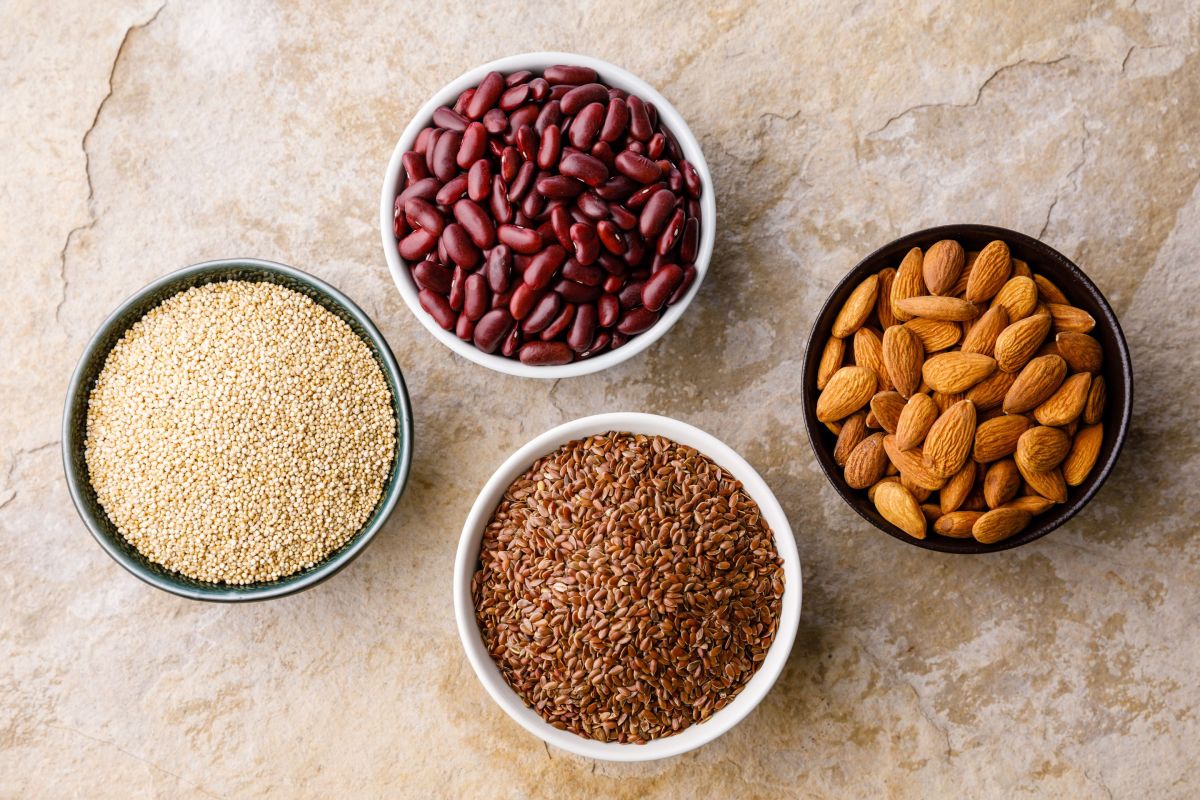Dive into the vibrant world of soy-free dips and spreads! This comprehensive guide unveils the secrets to crafting creamy, flavorful alternatives to your favorite soy-based condiments, without sacrificing taste or texture. We’ll explore a range of ingredients, techniques, and recipes, empowering you to create delicious and healthy dips and spreads perfect for any occasion, from casual gatherings to elegant entertaining.
Discover the versatility of ingredients like creamy cashews, vibrant sun-dried tomatoes, and subtly spiced chickpeas as we explore the fundamentals of soy-free cooking. Learn how to master the art of achieving the perfect consistency using natural thickeners, and adapt your beloved recipes to be completely soy-free. Get ready to embark on a culinary journey filled with exciting flavor combinations and satisfying results.
Soy-Free Dip & Spread Fundamentals
Creating delicious and healthy soy-free dips and spreads is easier than you might think. By understanding the fundamental ingredients and techniques, you can craft a wide variety of flavorful options that are both satisfying and free from soy allergens. This section will explore the key components and methods for achieving perfect consistency and texture.
Common Ingredients in Soy-Free Dips and Spreads
A vibrant array of ingredients contributes to the unique flavor profiles and nutritional value of soy-free dips and spreads. These ingredients offer a diverse range of textures and tastes, allowing for endless culinary creativity. Healthy fats, such as avocado, provide creaminess and essential fatty acids. Nut butters, like almond or cashew butter, add richness and protein, while seeds, such as sunflower or pumpkin seeds, offer a boost of healthy fats and fiber. Fresh herbs and spices provide aromatic depth and complexity. Finally, acidic elements like lemon juice or vinegar balance the flavors and enhance the overall taste. For example, a vibrant cilantro-lime avocado dip relies on the creamy texture of avocado, the bright flavors of cilantro and lime, and a touch of spice for a zesty and refreshing result. In contrast, a roasted red pepper and walnut dip features the earthy sweetness of roasted peppers balanced by the nutty richness of walnuts, creating a more robust and savory experience.
Soy-Free Thickening Agents
Achieving the desired consistency in soy-free dips and spreads requires careful selection of thickening agents. Cornstarch, arrowroot powder, and xanthan gum are common choices, each offering unique properties. Cornstarch provides a slightly opaque, slightly starchy texture, ideal for dips that need a thicker consistency. Arrowroot powder offers a clearer, more neutral thickening power, suitable for dips where clarity is desired. Xanthan gum, a powerful hydrocolloid, creates a smooth, stable emulsion, even in low-fat applications. The choice of thickener depends largely on the desired final texture and the specific ingredients used. For example, a creamy cashew dip might benefit from the smooth texture imparted by xanthan gum, while a chunky salsa might only require a small amount of cornstarch to slightly bind the ingredients without affecting the overall texture.
Achieving Desired Consistency and Texture
The key to creating perfect soy-free dips and spreads lies in understanding the interplay between ingredients and techniques. Proper blending is crucial for achieving a smooth and creamy texture. Over-processing can lead to a grainy or overly emulsified texture, while under-processing may leave the dip chunky and uneven. For smoother dips, using a high-speed blender is recommended. Furthermore, the temperature of the ingredients can affect the final texture. Cold ingredients will result in a thicker dip compared to warm ingredients, so temperature control is vital for consistent results. Adding the thickener gradually while blending ensures proper dispersion and prevents clumping. For example, starting with a small amount of cornstarch and slowly adding more while constantly blending prevents the cornstarch from clumping and creating pockets of thick consistency. Finally, the ratio of liquids to solids will directly influence the final consistency. A higher liquid ratio will result in a thinner dip, while a lower liquid ratio will result in a thicker dip. Careful adjustment of this ratio is key to achieving the desired consistency.
Popular Soy-Free Dip & Spread Recipes

Discover three delectable and versatile soy-free dips and spreads perfect for enhancing your culinary creations. These recipes are designed to be both flavorful and easy to prepare, using readily available ingredients. Each recipe offers a unique texture and flavor profile, catering to a variety of tastes and preferences.
Three Soy-Free Dip and Spread Recipes
Below are detailed recipes for a creamy hummus alternative, a tangy cashew cheese, and a vibrant sun-dried tomato spread. Each recipe includes a step-by-step guide and notes for optimal results.
| Ingredient | Quantity | Instructions | Notes |
|---|---|---|---|
| Roasted Red Peppers | 1 cup | Roast red peppers until skin is blistered. Peel and remove seeds. | For a smoky flavor, roast over an open flame. |
| Tahini | 1/4 cup | Add to food processor. | Use high-quality tahini for best results. |
| Lemon Juice | 2 tablespoons | Add to food processor. | Adjust to taste. |
| Garlic | 2 cloves | Add to food processor. | Use fresh garlic for optimal flavor. |
| Water | 2-4 tablespoons | Blend until smooth, adding water as needed to reach desired consistency. | Start with less water and add more as needed. |
| Salt | To taste | Season to taste. | Add salt gradually. |
| Olive Oil | 1 tablespoon | Drizzle on top. | Use extra virgin olive oil. |
| Ingredient | Quantity | Instructions | Notes |
|---|---|---|---|
| Raw Cashews | 1 cup | Soak in hot water for at least 30 minutes, then drain. | Soaking softens the cashews for a creamier texture. |
| Lemon Juice | 2 tablespoons | Add to food processor. | Adjust to taste. |
| Nutritional Yeast | 2 tablespoons | Add to food processor. | Provides a cheesy flavor. |
| Water | 2-4 tablespoons | Blend until smooth and creamy, adding water as needed. | Start with less water and add more until desired consistency is reached. |
| Garlic Powder | 1/2 teaspoon | Add to food processor. | Adjust to taste. |
| Salt | To taste | Season to taste. | Add salt gradually. |
| Ingredient | Quantity | Instructions | Notes |
|---|---|---|---|
| Sun-dried Tomatoes | 1 cup, packed | Drain well if packed in oil. | Oil-packed sun-dried tomatoes add richness. |
| Olive Oil | 2 tablespoons | Add to food processor. | Use extra virgin olive oil. |
| Garlic | 2 cloves | Add to food processor. | Use fresh garlic for optimal flavor. |
| Balsamic Vinegar | 1 tablespoon | Add to food processor. | Adjust to taste. |
| Salt | To taste | Season to taste. | Add salt gradually. |
| Black Pepper | To taste | Season to taste. | Freshly ground black pepper enhances the flavor. |
Three Unique Flavor Combinations
The versatility of soy-free dips and spreads allows for endless flavor explorations. Here are three unique combinations showcasing diverse flavor profiles.
First, a roasted red pepper and walnut dip combines the sweetness of roasted red peppers with the earthiness of walnuts, creating a rich and satisfying spread. The addition of a touch of smoked paprika enhances the depth of flavor.
Second, a creamy avocado and cilantro dip features the smooth creaminess of avocado balanced by the bright, herbaceous notes of cilantro. A squeeze of lime juice adds a vibrant zing.
Third, a spicy carrot and ginger dip offers a warming, spicy kick. The sweetness of carrots is complemented by the pungent bite of ginger, creating a unique and flavorful experience.
Roasted Red Pepper and Walnut Dip Recipe Card
Imagine a vibrant, deep red dip, its smooth, creamy texture punctuated by the occasional crunch of a walnut. The aroma is rich and inviting, a blend of roasted sweetness and nutty earthiness. The color is a deep, rustic red, flecked with the occasional speckle of walnut. The texture is luxuriously smooth and creamy, with a pleasant textural contrast from the chopped walnuts. The aroma is warm and inviting, with notes of roasted red pepper and toasted walnuts. This dip is perfect with pita bread, vegetables, or crackers.
Creating delicious and healthy soy-free dips and spreads is now within your reach! From mastering the basics of texture and consistency to exploring a world of unique flavor profiles, this guide has equipped you with the knowledge and recipes to transform your culinary creations. Experiment with different ingredients, embrace your creativity, and enjoy the satisfaction of crafting your own signature soy-free dips and spreads – perfect for sharing with friends, family, and yourself!
Query Resolution
What are the best substitutes for soy sauce in dips?
Coconut aminos, tamari (if gluten-free is not a concern), or a combination of Worcestershire sauce and liquid aminos offer excellent soy sauce alternatives, depending on the desired flavor profile.
Can I freeze soy-free dips and spreads?
Yes, many soy-free dips and spreads freeze well. Allow them to cool completely before transferring to freezer-safe containers. Thaw overnight in the refrigerator for best results.
How long do soy-free dips and spreads last in the refrigerator?
Most soy-free dips and spreads will last for 3-5 days in the refrigerator when stored in airtight containers. Always check for any signs of spoilage before consuming.
Are all soy-free dips and spreads automatically vegan?
Not necessarily. While many soy-free dips and spreads are vegan, some recipes may include dairy or other non-vegan ingredients. Always check the recipe ingredients to ensure it aligns with your dietary needs.


